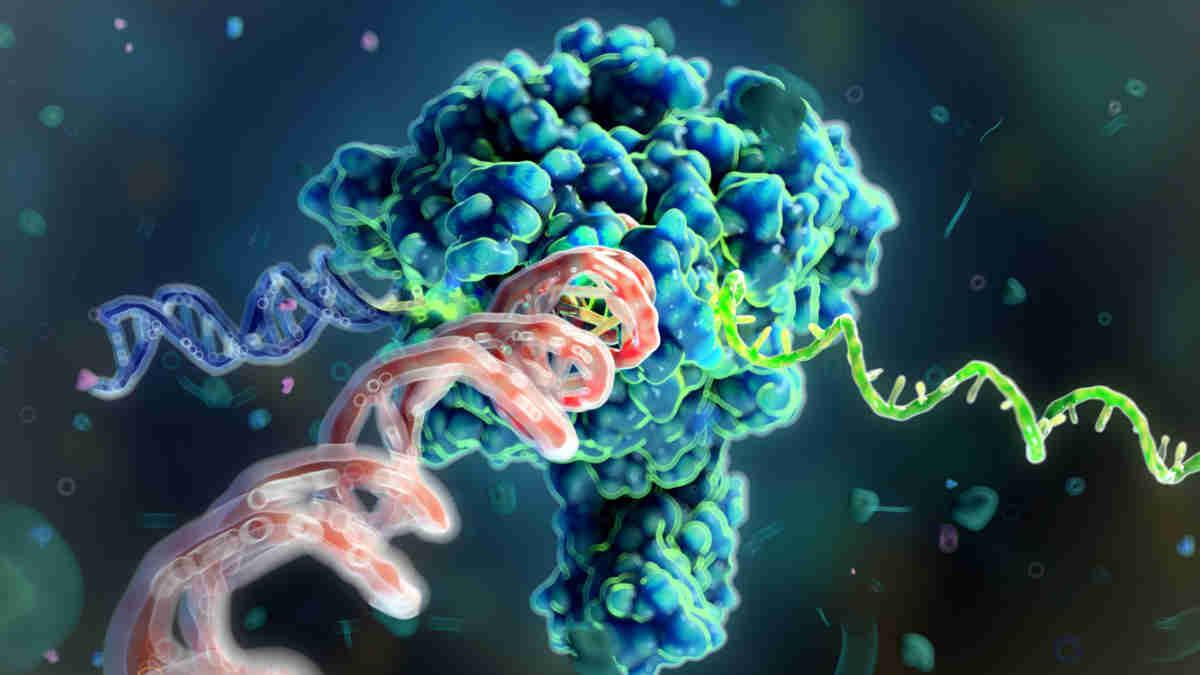mRNA is the next big thing in medicine. Here’s why Noxopharm could be the ASX front runner in this field

mRNA is set to be the new frontier in vaccines, but has serious side effects including inflammation. Picture Getty
- mRNA is set to be the new frontier in vaccines, but has serious side effects including inflammation
- ASX listed Noxopharm has a program to tackle this problem
- Stockhead reached out to Noxopharm’s CEO, Gisela Mautner
Scientists have been studying Messenger RNA or mRNA for decades starting in the 1960s, but it took until the global Covid-19 pandemic of 2020 for the first mRNA vaccine to be brought to market.
In three short years however, mRNA vaccines have saved millions of lives, achieved household recognition, and produced two Nobel Laureates – Katalin Karikó and Drew Weissman.
But the future of mRNA vaccines is not limited to just Covid. Biotechs are already developing mRNA vaccines to protect against other viruses such as the flu, and even HIV.
Despite this huge potential, one of the biggest drawbacks of taking mRNA vaccines is that fragments of mRNA bind to inflammation receptors in the body causing overstimulation, which results in inflammation.
Although inflammation is a natural part of the immune response when the body detects foreign substances, there is growing awareness of the importance of reducing inflammation in mRNA vaccines.
Noxopharm (ASX:NOX) is the only listed company on the ASX which is tackling this side effect problem head-on.
Recent animal study has shown that Noxopharm’s SOF-VAC mRNA vaccine enhancer significantly reduces mRNA-driven inflammation by as high as 50%.
“This enhancer works on specific cell receptors in the body to block inflammation at its source,” CEO of Noxopharm, Dr Gisela Mautner, told Stockhead.
“And we work with the Hudson Institute of Medical Research in Melbourne, which is the main scientific driver behind behind this technology.”
Mautner explained that mRNA vaccines work by giving the body a set of instructions to build proteins which then activate the immune cells to fight the virus.
“But unfortunately, what also happens is that these mRNA particles activate the inflammatory receptors in the body, and that’s the unwanted side effect,” she said.
As a result, the challenge for mRNA vaccines, like the ones we had for Covid, is that you can’t put a lot of dose into the syringe because you could develop all these unpleasant side effects.
“And that’s actually the basis of the Nobel Prize in medicine that was just awarded. The two scientists showed how can you give mRNA without creating these inflammatory side effects.
“That technology, no surprises, has been licensed to Moderna and Pfizer/BioNTech, and is therefore off the market.
“So, we at Noxpharm developed the same thing but with different approach to tackle the same problem. SOF-VAC basically aims to block the inflammatory receptors right at the source,” Mautner said.
‘A whole arena of mRNA drugs’ will need to use enhancers
Tackling inflammation is important because vaccines are basically given to populations that are essentially healthy, and who do not want to be negatively affected by a preventative vaccine administration.
The ability of SOF-VAC to reduce these inflammatory side effects has several potential benefits, such as enabling mRNA vaccines to be given with higher doses – creating longer-lasting protection and a decrease in the frequency of booster shots required.
“It also opens up a whole new world of possibilities, such as being able to put several vaccines into one syringe to treat different diseases,” Mautner said.
“But most excitingly, as a result of this, the future of mRNA won’t be limited to just vaccines, but instead there will be a whole arena of drugs of medical treatments that could be opened up.”

With drugs (which unlike vaccines are not given just once), the need for an enhancer is even more critical because drugs need to be given in higher doses than vaccines.
“This is where the inflammatory side effects become of real significance. And this is why we are so excited about our technology, and the potential it holds,” Mautner said.
“And the beauty of our technology is that it can be basically used with any RNA. We keep hearing about mRNA, but mRNA is only one type of RNA.
“There are all kinds of RNA that our enhancer can be used with.”
Pancreatic drug CRO-67 gets FDA ODD status
In addition to the SOF-VAC technology which comes under its Sofra program, Noxopharm is also developing the Chroma program which includes a collection of drug candidates with new properties to fight cancer.
Under the Chroma program sits the flagship CRO-67 drug, which takes an inventive approach to treat pancreatic cancer.
Pancreatic cancers are particularly difficult to treat because of the the hard shell-like outer layer that usually surrounds the tumour, called fibroblast.
Fibroblast not only nurtures the tumour, it also protects external drugs from entering and attacking the tumour.
Because of that, pancreatic cancer has the worst survival rate of all the major cancers, with a five-year relative survival rate of only 44%. And if the cancer has spread to surrounding tissues or organs, the five-year relative survival rate goes down to 15%.
“So what’s unique about our CRO-67 is that it has what we call dual cell activity,” explained Mautner.
“It kills the cancer cells of course, that’s number one, but it also breaks these barrier cells by softening them up and depriving the tumour of its nurturing.”
In early October, CRO-67 was granted Orphan Drug Designation (ODD) status by the US FDA. Only two other Australian companies have received an ODD from the FDA, from a total of 260 issued.
In addition to financial benefits, the ODD will also strengthen Noxopharm’s commercial position in a market that has seen very few new treatments over recent decades.
“The really sad thing about pancreatic cancer is that there hasn’t been any new development for the last 30-40 years,” said Mautner.
“A lot of companies have tried, and nothing’s really worked. So the options out there are very, very limited.”
‘A completely new field in medicine’
Noxopharm is one of the best performing early-stage ASX biotechs over the past six months, with its share price surging by almost 70% on the back of news flow.
“Of course, biotech is always going to be high risk, but we have very promising assets,” Mautner said.
“And obviously the earlier you get in, the higher the reward.”
Mautner added that being associated with a Nobel Prize winning technology shows not only the firm’s capability, but also relevance in today’s cutting edge biotechnology.
“Our technology underscores how important reducing inflammation is in the field of medicine,” said Mautner.
“RNA technology in general is going to be a completely new field in medicine, and it’s going to be huge.
“We want to be a player in this market, and we have a fantastic team that’s dedicated, enthusiastic and so motivated to achieve this goal.”
Noxopharm share price today:
Related Topics

UNLOCK INSIGHTS
Discover the untold stories of emerging ASX stocks.
Daily news and expert analysis, it's free to subscribe.
By proceeding, you confirm you understand that we handle personal information in accordance with our Privacy Policy.








